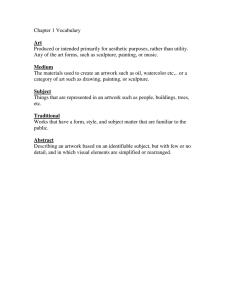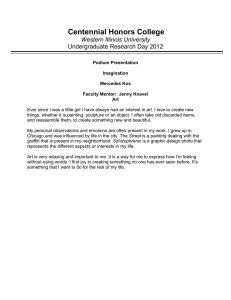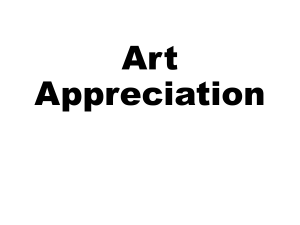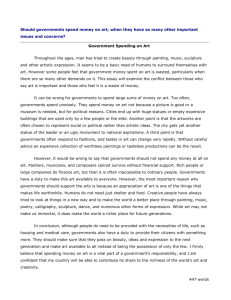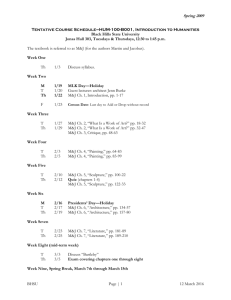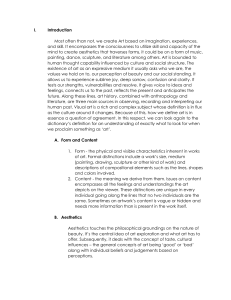Fine Arts Survey Study Guide
advertisement
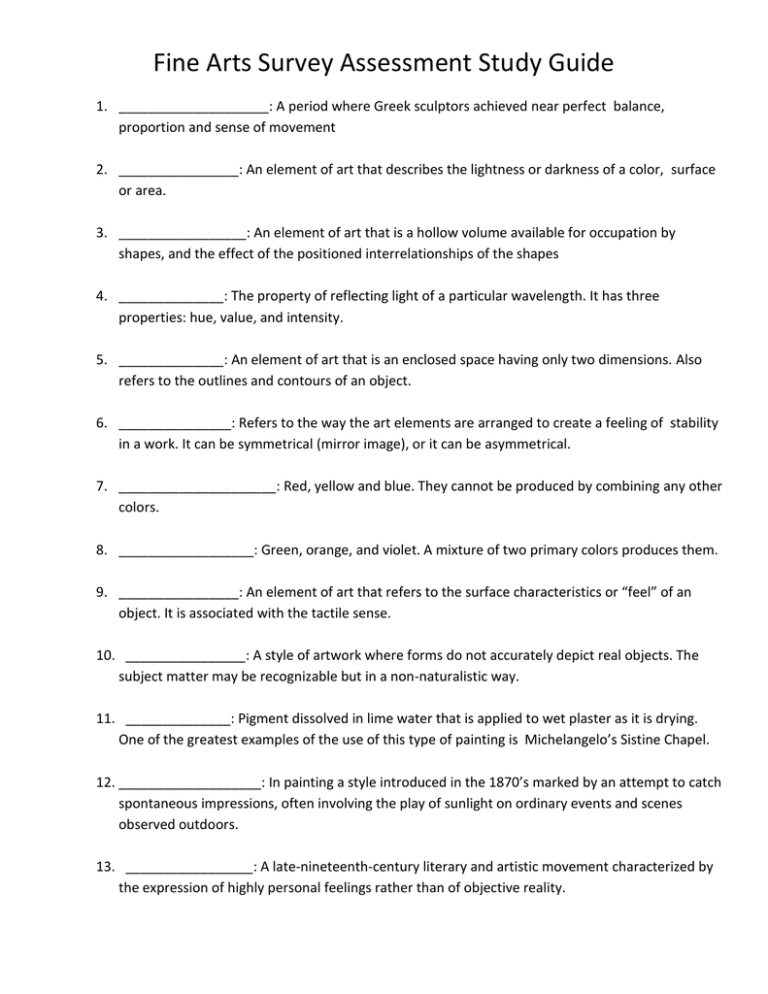
Fine Arts Survey Assessment Study Guide 1. ____________________: A period where Greek sculptors achieved near perfect balance, proportion and sense of movement 2. ________________: An element of art that describes the lightness or darkness of a color, surface or area. 3. _________________: An element of art that is a hollow volume available for occupation by shapes, and the effect of the positioned interrelationships of the shapes 4. ______________: The property of reflecting light of a particular wavelength. It has three properties: hue, value, and intensity. 5. ______________: An element of art that is an enclosed space having only two dimensions. Also refers to the outlines and contours of an object. 6. _______________: Refers to the way the art elements are arranged to create a feeling of stability in a work. It can be symmetrical (mirror image), or it can be asymmetrical. 7. _____________________: Red, yellow and blue. They cannot be produced by combining any other colors. 8. __________________: Green, orange, and violet. A mixture of two primary colors produces them. 9. ________________: An element of art that refers to the surface characteristics or “feel” of an object. It is associated with the tactile sense. 10. ________________: A style of artwork where forms do not accurately depict real objects. The subject matter may be recognizable but in a non-naturalistic way. 11. ______________: Pigment dissolved in lime water that is applied to wet plaster as it is drying. One of the greatest examples of the use of this type of painting is Michelangelo’s Sistine Chapel. 12. ___________________: In painting a style introduced in the 1870’s marked by an attempt to catch spontaneous impressions, often involving the play of sunlight on ordinary events and scenes observed outdoors. 13. _________________: A late-nineteenth-century literary and artistic movement characterized by the expression of highly personal feelings rather than of objective reality. 14. _______________: A material from which an artwork is made. 15. _____________________: This type of sculpture emphasizes spatial relationships and tends to deemphasize the density of materials. 16. ______________: A type of writing with wedge-shaped characters done with a stylus. 17. ____________________________: Sculpture made by carving grooves of various depths into the surface plans of the sculptural material, the surface plane remaining perceptually distinct. An example would be hieroglyphics carved into a stone. 18. ___________________: An external masonry support, found primarily in Gothic churches that carries the thrust of the ceiling, or vault, away from the upper walls of the building to an external vertical column 19. _________________: Refers to a structural principal in architecture in which one end of a horizontal form is fixed, usually in a wall, while theother end juts out over space. Example: The Guggenheim Museum architecture by Frank Lloyd Wright. 20. ___________________: The arrangement of things around some paramount thing. 21. _______________: The shaft and the capital, which includes the Abacus and Echinus. A common type is the Doric order, the simplest of Greek orders. 22. _________________: She took one of the most poignant records of the Great Depression, the Famous photograph called the Migrant Mother in 1936. 23. ___________________: Produced, directed, wrote the script, and starred in the film Citizen Kane about the life of the fictional Charles Foster Kane. The movie was proclaimed by the American Film Institute in 1998 to be the number one film of all time. 24. _____________________: Photographers who use the achievements of painting, particularly realistic painting, in their effort to realize the potential of photography as art. 25. The Jazz Singer: This was the movie that introduced Sound in 1927.
